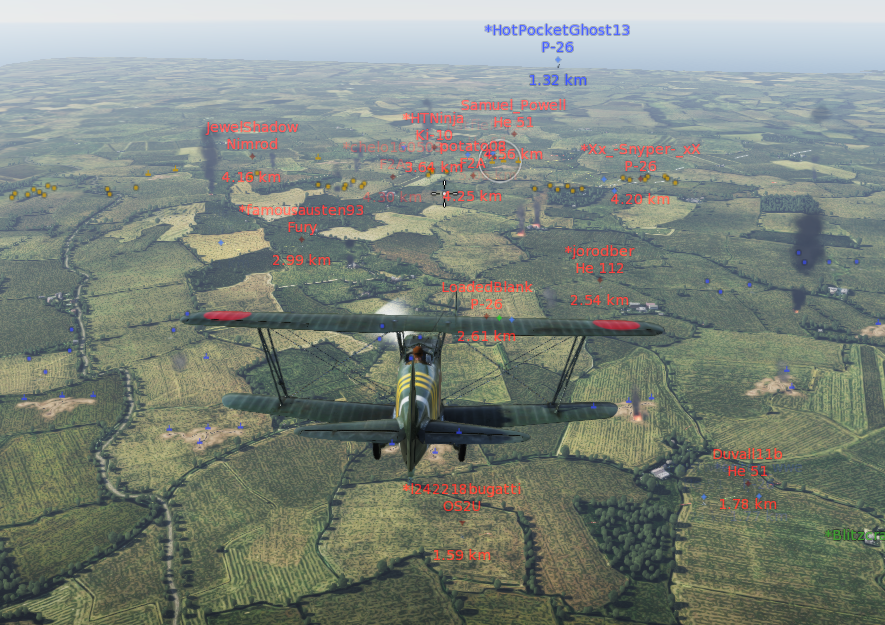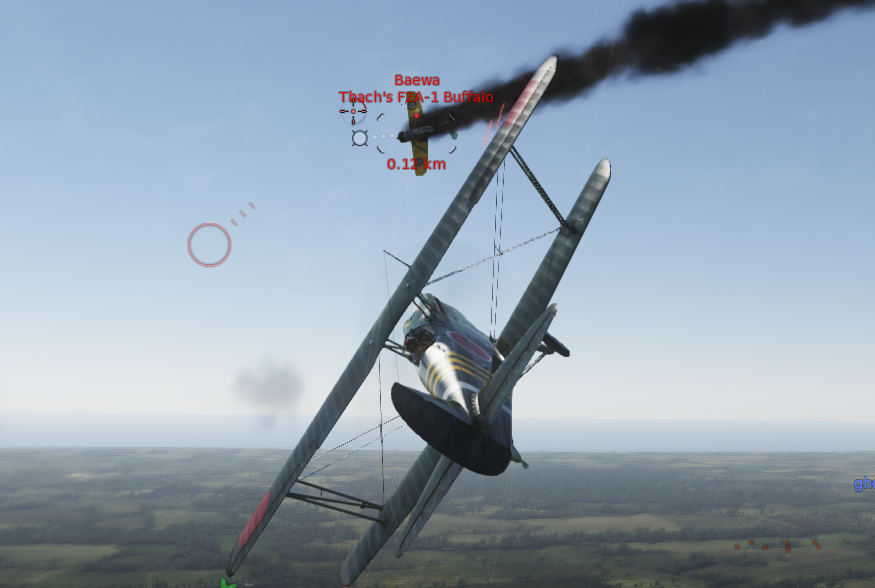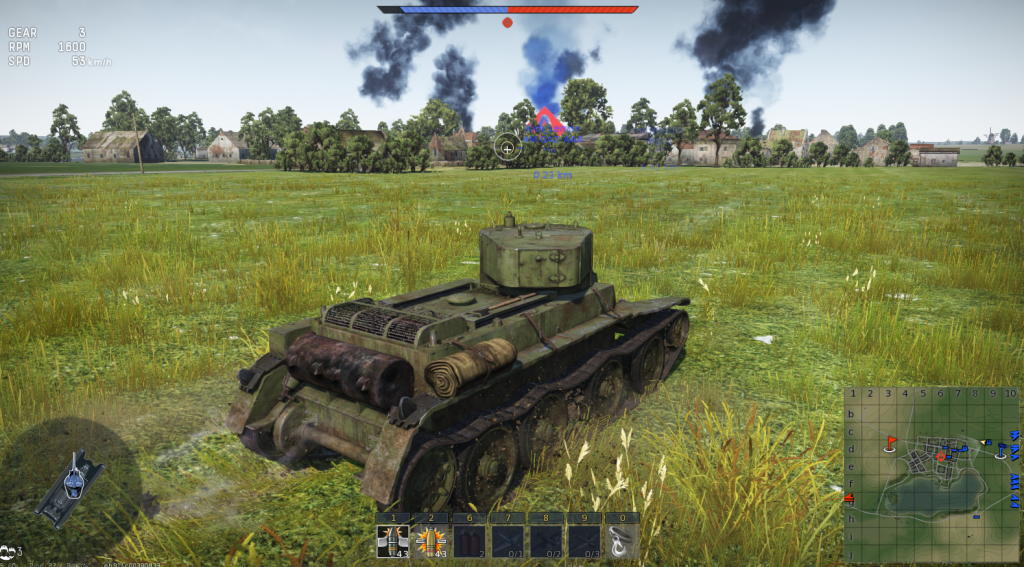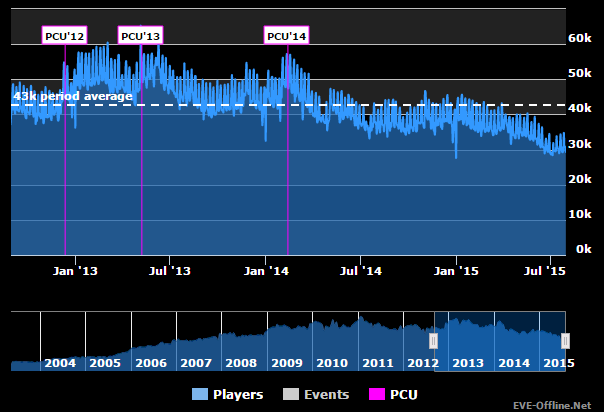I played War Thunder for the first time on Monday.
I’d always looked askance at the Gaijin title as a false claimant to the Wargaming.net throne, particularly when Ground Forces was announced as a competitor to World of Tanks. WoT has always been close to my heart, despite being terrible at it. I remember playing in the Beta days, when the premium Hotchkiss was an invulnerable killing machine in the lower tiers. It’s hard to shake the affection, even after realizing that without a crutch I am truly terrible.
Still. War Thunder is looking better and a clean slate has its advantages. Maybe I won’t tank (ha ha ha ha!) my win rate as I have in World of Tanks? I played the tutorial ages ago. Let’s see how this game is nowadays.
Looks like I picked the Japanese tree when I was doing my tutorial run. That’s Japan’s entry-level fighter, the Ki-10. It makes sense – when I think of Japanese aircraft, I think of the Zero and Oscar – relatively light aircraft with extreme maneuverability. In flight sims I’m typically pretty bad at boom-and-zoom, so nimble dogfighters appeal to me.
Anyways. Let’s hit the “To Battle!” button and see what happens.
Maybe I should have given the tutorials another playthrough. I’m not sure what side I’m on: Red or Blue. Is Red always the enemy? That’s how it is in WoT, but this game is different in a lot of subtle ways. I make a snap decision. The Reds must be friendly, because there’s so many more of them visible.
This is the wrong choice.
I chase a Blue airplane around, slowly acclimating to the controls and missing a lot of shots. Then a Red Russian I-15 biplane opens fire and relieves me of my misconception about who the bad guys are. After a few minutes of dogfighting, he kills my pilot and the Ki-10 drifts into the ground. Scratch one me.
In my second action, I dive from high altitude and put a few bullets into an OS2U seaplane before misjudging my speed, smashing into it and killing us both. I do not get any screenshots of this shameful display. Scratch two mes.
Third life. I stay at medium altitude and speed this time, looking for targets of opportunity. Target spotted! It’s another I-15, maybe the same one. My Ki-10 manages to slip behind him and score a few hits with my 7.7mm machine guns. The I-15 dives to escape me, cutting it very close to the ground – too close. There’s an unusually tall treebank in the way. The I-15’s ailerons twitch as it tries to pull left for just an instant before it smashes through the branches and into the ground. It’s credited to me; I may have damaged his control surfaces. Who cares! I have my first kill!
And the match ends. I spend a moment idly thinking about how planes with radial engines look like normal aircraft with condoms on as the score screen comes up.
I click on a bunch of research and unlock things. I think I might have screwed up – I use almost all of my “Golden Eagles”, which are apparently the premium currency. I started with about 100. I now have 10. Oh well!
I use my research points to unlock the next tier of Japanese fighter, the A5M. I’m very excited to try my new baby out! Next battle, please!
My new baby burns merrily about thirty seconds into the new battle. Good night, sweet prince. It’s back to the Ki-10s with me. But with a little bit of experience under my belt…
… things are getting…
…somewhat easier.
I have to take an aside here and praise the control scheme and realism level in Arcade mode. The aircraft all have individual flight characteristics without a punishing level of realism. There are no flat spins or unpredictable stalls, just balls-to-the-wall dogfighting. I can appreciate an absurdly realistic flight model as much as the next dork, but this is straight fun.
Well, that’s settled. I like the planes. Let’s try tanks.
Now, as mentioned, I have been playing a decent amount of World of Tanks lately (I just reached the T-43 on the Russian medium tree). I’d heard that some aspects of War Thunder’s simulation were more realistic and fleshed out and that the playstyle was more deliberate. This turned me off a bit, honestly. I enjoy my slow games (look for a review of Rule The Waves coming soon!) but I enjoy these F2P windowed-mode games because I can dip in for a bit of twitchy action and move on. “World of Tanks, but slower” seems, well, worse.
Thankfully, War Thunder robbed me of my preconceptions. After playing through the surprisingly-decent tutorial and being wowed by the physics, gunnery and overall feel, I take my dinky BT-5 into my first Arcade Tank battle.
I crank her up to full speed, travelling across a grassy field from our spawn to the town in the center of the map, and… oh my god. My tank can drift. This is fucking hot. I’m starting to see the appeal of this physics model. A couple of minutes are spent driving in circles and seeing if I can roll my Russian tin can.
Eventually, I slalom into town like a jackass and take up position north of what I think is some kind of capture point. A panzer shows up and shoots the hell out of me.
The Panzer IV knocks me out and I am subjected to some Disturbing Imagery.
When you’re knocked out in War Thunder, you get an “instant replay” cam that follows the enemy shell in slow motion as it impacts your tank. The camera then gives you an “xray” view of the inner workings of your tank, showing the shell’s penetration point and the damage it does to individual components and crew members.
There is something gruesomely enjoyable about the x-ray cam, seeing those shell fragments rip through the crew. I remember reading, years ago, about Italian tanks in WWII. Their crews called them “iron coffins.” They were built with rivets instead of welding. When the tank took a hit, even a nonpenetrating one, the rivets would shear off the plates and bounce around inside the crew compartment like bullets. After the battle, someone would open up one of these apparently “abandoned” machines, which might have little or no visible external damage, and find the crew inside turned into ground beef.
In any case, I don’t ruminate on this for long. Taking a more cautious approach into town, I sidescrape alongside one of the buildings, leaving just my turret and a bit of angled armor visible to the avenue of approach of the enemy.
A Panzer IV and a Panzer 35(t) start peeking over the hill facing the town. Their shots bounce, mostly. The Panzer IV gets close and engages me from behind a pile of rubble. My driver is knocked unconcious: I have to stand and fight. I’ve figured out my gun handling a little better. First the IV, then the 35(t) go down.
I feel like a hero. Eventually, an M2A4 infiltrates the town and takes me out, ending the battle. Not bad for a first engagement, right?
If it wasn’t obvious, I very much enjoyed my first few bouts in War Thunder. The air and ground Arcade modes were easy to pick up and genuinely rewarding, with quick progress through the research trees. The community seems less toxic than World of Tanks’, as well. Give it a shot, if you haven’t, and make sure to join the discussion in our Game of the Month thread.

























